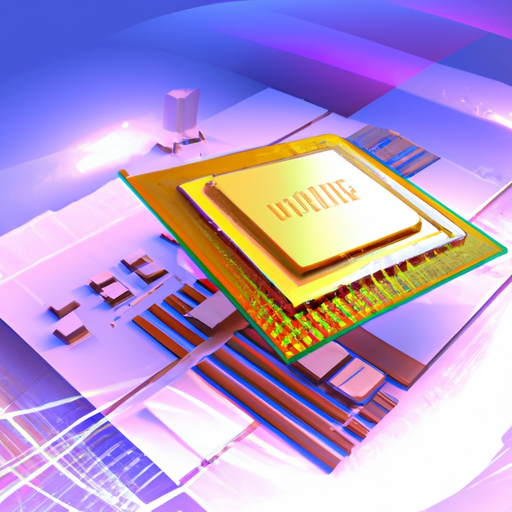In this article, we will explore various ways that you can boost the performance of your slow computer. We will discuss simple yet effective tips and techniques that can help speed up your system and enhance its overall functionality. From cleaning up your hard drive and updating your software to optimizing your system settings and upgrading your hardware, you’ll learn practical solutions to improve the speed and performance of your computer. So, if you’re tired of dealing with a sluggish machine, keep reading to discover how you can give your computer a much-needed boost.
Ways to Boost the Performance of a Slow Computer
If you’re tired of waiting for your computer to load programs and complete tasks, don’t worry – there are several methods you can try to boost its performance. Whether you’re dealing with a sluggish startup, slow internet browsing, or lagging applications, these tips will help you optimize your computer’s speed and efficiency. So let’s take a closer look at some effective strategies to improve the performance of your slow computer.
Clean Up the Hard Drive
One of the most common reasons for a slow computer is a cluttered hard drive. Over time, files and programs accumulate, taking up valuable space and causing your computer to slow down. By cleaning up your hard drive, you can free up storage and improve performance. Here are a few steps to get you started:
Delete Unnecessary Files and Folders:
Take the time to go through your files and folders and delete anything you no longer need or use. Old documents, duplicate files, and unnecessary downloads can take up significant space and slow down your computer.
Empty Recycle Bin:
When you delete files, they often end up in the Recycle Bin. To permanently remove them from your computer, make sure to empty the Recycle Bin regularly.
Use Disk Cleanup Utility:
Windows has a built-in tool called Disk Cleanup that can help you remove unnecessary files and free up space on your hard drive. Simply search for “Disk Cleanup” in the start menu and follow the prompts to run the utility.
Organize and Defragment Files:
As you use your computer, files can become fragmented and scattered across the hard drive, making it slower to access them. Running a disk defragmentation tool will rearrange files and improve overall performance.

Uninstall Unnecessary Programs
Another way to speed up your computer is by uninstalling unnecessary programs. Over time, you may have installed software that you no longer use or need. These programs can take up valuable system resources and slow down your computer. Follow these steps to uninstall unnecessary programs:
Identify and Remove Unused Software:
Go through your installed programs list and identify any software that you no longer use or need. Take your time and carefully review each program before deciding to uninstall it.
Use Control Panel to Uninstall Programs:
Most programs can be uninstalled through the Control Panel. Simply open the Control Panel, navigate to the “Programs” or “Programs and Features” section, and select the program you want to uninstall. Follow the prompts to complete the process.
Utilize Third-Party Uninstaller Apps:
In addition to the built-in Windows uninstaller, there are also third-party uninstaller apps available that can help you remove stubborn or hard-to-find programs. These tools often provide more thorough and efficient uninstallation.
Disable Startup Programs
When you start your computer, some programs automatically launch in the background, using up system resources and slowing down the startup process. By disabling unnecessary startup programs, you can improve your computer’s startup speed. Here’s how to manage startup programs:
Manage Startup Programs in Task Manager:
Press “Ctrl + Shift + Esc” to open the Task Manager. Navigate to the “Startup” tab, where you can see a list of programs that launch at startup. Right-click on any program you want to disable and select “Disable” or “Disable Process”.
Prevent Apps from Automatically Launching:
Some applications have settings that allow them to start automatically when your computer boots up. Look for these settings within the application and disable them if you don’t need the program running in the background all the time.

Increase RAM
If your computer is running slow, it may be due to insufficient memory (RAM). By increasing the amount of RAM in your computer, you can improve its performance and handle more demanding tasks. Here’s what you need to do:
Determine Memory Requirements:
Check your computer’s specifications or consult the manufacturer’s website to determine the maximum amount of RAM your computer can support. Also, consider the type and speed of RAM required.
Install Additional RAM Modules:
Once you know how much RAM your computer can support, purchase and install additional RAM modules. Make sure to follow proper installation procedures or consult a professional if you’re unsure.
Update Operating System and Drivers
Keeping your operating system (OS) and device drivers up to date is crucial for optimal performance and security. Updates often include bug fixes, performance improvements, and compatibility updates. Here’s how to update your operating system and drivers:
Check for and Install OS Updates:
For Windows users, click on the Start menu and go to “Settings > Update & Security”. Check for updates and install any available updates. If you’re using a Mac, click on the Apple menu, select “System Preferences > Software Update” and follow the prompts.
Update Device Drivers:
Outdated or incompatible drivers can cause performance issues. Visit your computer manufacturer’s website or the website of the specific hardware component manufacturer to download and install the latest drivers for your system.

Run Disk Cleanup and Defragmentation
Regularly running disk cleanup and disk defragmentation can improve your computer’s performance. These tools help optimize storage and organize files on your hard drive. Follow these steps for disk cleanup and defragmentation:
Perform Disk Cleanup:
Use the Disk Cleanup utility (accessible through the Start menu or by searching) to remove unnecessary files such as temporary internet files, system error memory dump files, and temporary Windows files. This will help free up space and improve performance.
Defragment Hard Drive:
In addition to disk cleanup, running a disk defragmentation tool will rearrange files on your hard drive, making them more efficient to access. This can significantly improve the speed at which your computer operates.
Remove Malware and Viruses
Malware and viruses can significantly slow down your computer and compromise your security. To boost performance, it’s essential to install antivirus software, scan for malware, and perform regular system scans. Follow these steps for malware removal:
Install Antivirus Software:
Choose a reputable antivirus software and install it on your computer. Make sure to keep the software up to date to protect against the latest threats.
Scan and Remove Malware:
Run a full system scan using your antivirus software to detect and remove any malware or viruses that may be lurking on your computer. Follow the prompts to quarantine or delete any threats identified.
Perform Regular System Scans:
To maintain optimal performance and security, schedule regular system scans. Automatic scans can help detect and remove threats before they cause significant issues.

Optimize Web Browser
If web browsing feels sluggish, optimizing your web browser can help speed up your internet experience. Here are a few tips to optimize your browser:
Clear Browser Cache and Cookies:
Over time, web browsers accumulate temporary files, cookies, and other data, which can slow down your browsing experience. Clearing your browser cache and cookies regularly can improve performance.
Manage Extensions and Plugins:
Extensions and plugins can add additional functionality to your web browser but can also consume system resources. Review your installed extensions and disable or remove any that you don’t use or need.
Disable Unnecessary Browser Features:
Web browsers often come with various features enabled by default, such as automatic updates or the option to save form data. Disabling unnecessary features can help speed up your browsing experience.
Conclusion
By implementing these methods, you can greatly enhance the performance of your slow computer. Regularly cleaning up your hard drive, uninstalling unnecessary programs, disabling startup programs, increasing RAM, updating your operating system and drivers, running disk cleanup and defragmentation, removing malware and viruses, optimizing your web browser, and clearing temporary files and cache can all contribute to a smoother and faster computing experience. Remember, regular maintenance and following these steps will ensure your computer performs at its best. So why wait? Start optimizing your computer today and enjoy a faster and more efficient computing experience.

